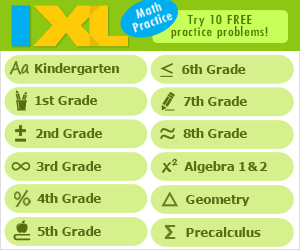Is It More Than Just Not Following Directions?
by Internet4classrooms.com
Consider these two scenarios:
1) You instruct your students on a graphing assignment. Find the number of times each selected letter is used in the word, and graph the chart accordingly. You hand out the worksheets and tell them to get started. As you walk around the room, you see one student doing the graph incorrectly. You walk by, remind him of the assignment, and continue to monitor the classroom as a whole.
You walk by again. His graph still looks wrong. You ask him if he heard the assignment. He says, "Yes, we need to graph the letters in this word." She walks along. This is repeated three times. When time is up, you collect the worksheets for grading. His paper is completely incorrect.
2) You instruct your students on a letter assignment. Look at the picture, and write the beginning letter sound on the paper. When you review the children's work, you see the same student continuously writing the wrong letter sound, yet you know that child knows his alphabet. He can review them orally with you and identify them just fine. His paper is completely incorrect. Why do these two students appear to never follow directions?
You explained the assignments. You reminded them of the instructions. The first student even repeated the instructions back to you! You know they understand the concepts of the work. Clearly they just don't follow directions. Right? Wrong.
Look closely at the "incorrect" work. Study the graph that the first student completed. Instead of charting vertically, he charted horizontally. Now look at the second student. This student also happens to be in ESL. The picture was a dog. Dog starts with D. But Perro (the Spanish word for dog) starts with a P. He wrote P.
The issue was not a matter of NOT following directions. The issue becomes what the child interprets in correlation with what you are trying to teach. In today's current standards of testing, large curriculum, and time constraints on top of it all, it's not just a black and white, right or wrong answer. Do we figure out the cause of their answers, or do we assume they didn't listen to what we instructed them to do?
By figuring out how their minds work, we can successfully teach them the concepts that they need to progress. It's a great reminder to take a step back, assess each student individually, and ensure those general instructions are being comprehended by everyone in that classroom. It will only make you a better teacher.
Search Internet4Classrooms







